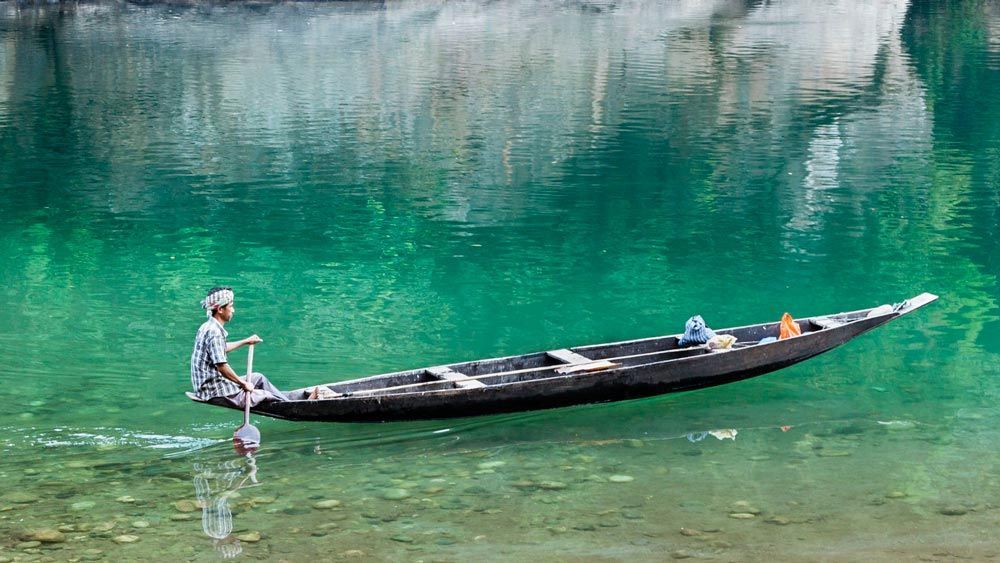Meghalaya is a small state in the northeast corner of India. The state is well known for being the “rock music” capital of India as well as for its picturesque locations. It is where Cherrapunji and Mawsynram, which have the highest recorded rainfall in Asia. are located. It is where cascading waterfalls, natural rock formations, and beautiful emerald rivers co-exist. It is where indigenous practices are promoted and where the Living Root Bridges which are a UNESCO heritage site are at. It is a place I call home.
It has been several years since I have lived there but I make the frequent visits. This position has allowed me to understand and view my hometown as both a native and a tourist. I have borne witness to its simultaneous development and destruction, and while I applaud the great leaps it has taken in getting more and more people to fall in love with Meghalaya and its people, a concern for the future does arise.
While this is anecdotal, it paints a bigger picture of what irks me the most about tourism-on a recent drive to Cherrapunjee, I watched disdainfully as a plastic bag of food packets was discarded out of a tourist taxi.It is difficult to comprehend how individuals on a drive to admire nature and all that she has to offcer can be so nonchalant in their contribution to its deterioration.
The vandalization of historical monuments is an example of how we fail as tourists. It has also become too commonplace to see plastic in our water bodies, on the beaches, in the forests covered with mud and undecomposed, or by the riverside. We drive, walk, and cycle around admiring the lush greens and flowing streams, taking pictures for all our social media handles, only to disrespect the space by leaving our garbage behind. We travel for views that are different from the usual concrete drab, taking in stunning colours and natural formations, and leave behind human negligence and carelessness.

The recent boom in the tourism and travel industry is hard to ignore. The 2018 Union budget has allocated a sum of INR 2150 Crore (US$ 296 million) to promote tourism in the country which is a 21% increase from the previous budget. The Central Govermnent also wishes to place an extra emphasis on promoting tourism in the northeastern states of India. Meghalaya has never been shy of tourists but even it has seen a sudden jump in the influx of tourists streaming in. In 2000 almost 1.7 lakh (170,000) tourists streamed in, and the number in 2017 rose to over 10 lakhs (1 million).The tourism industry is expected to grow at an accelerated rate and while that means an increase in revenue and more employment opportunities, there is also the risk of unchecked growth.
Most recently, some of the most famous cities in the world like Venice and Barcelona experienced a backlash from locals of not keeping a check on the boom in the tourist industry, and Meghalaya will, too, if certain measures are not put in place.
The change in Meghalaya’s countryside has become increasingly visible. I notice it while sitting on a boat at Dawki river and see food packets floating along; I notice it at the Laitlum Canyons when I am walking on green pastures and suddenly feel the crunch of plastic beneath my feet. And I notice the bottles that are left to lie by streams and brooks. It takes only a few careless acts to leave a permanent blemish on our environment, and most times it only takes taking those extra few steps to the wastebasket to make a difference.

To be a traveller is a beautiful notion, it means learning about different cultures, seeing new places, experiencing new things, and making memories that will be told as stories at dinner tables. To be a traveller, however, also entails a certain amount of responsibility. It means to be conscious, aware, and respectful of the space one enters into, and to contribute to preserving them rather than to their destruction.
My biggest fear is that we continue with our ignorant and careless acts, that we continue to assist in ruining places of beauty. And at rates that are alarming. What becomes of Meghalaya then without its natural beauty, its greenery, its pristine hills, and the sunsets that these things accentuate.
The responsibility to maintain the pristine environment does not befall on the tourist alone. It falls heavily on the natives and locals of the place, too. It is imperative that we ought to be mindful of what we leave behind. The USP of Meghalaya is its gorgeous terrain, and why I love it as much as I do.
Its beauty is undeniable and hidden gems continue to be discovered with regularity. The landscape is also changing drastically and negative environmental impacts can already be observed.We Khasis, Jaintias, and Garos contribute to the degradation of the environment. And it is worth keeping in mind that we are just visitors on this planet, and what has been said about the responsibility of a tourist applies to each of us. A more conservative approach to our surroundings and the spaces that we occupy for any length of time is not just necessary but vital.

